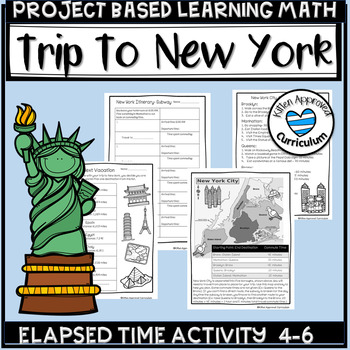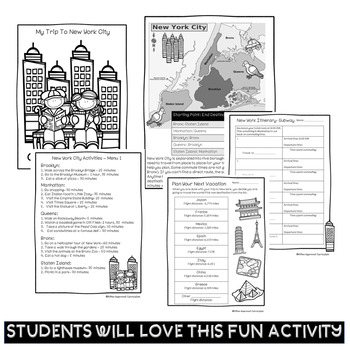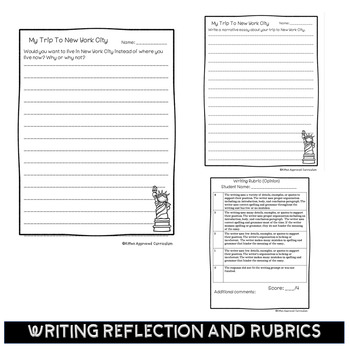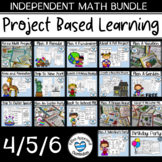Elapsed Time Travel Lesson Plan Project Based Learning New York Map NYC
- PDF
What educators are saying
Also included in
- Year long bundle of independent projects for gifted and talented students. Includes 17 different PBL critical thinking activities with multiple step problems. Each Project has been differentiated to best support 4th, 5th, and 6th grade with elapsed time, decimals, fractions, and interpret the remainPrice $39.00Original Price $72.00Save $33.00
Description
Plan a trip with fun time & map activities - Project Based Learning (or PBL) math. Students practice basic map skills and solve start, elapsed, and end time problems that are authentic and involve multiple steps. Appropriate for 4th-6th grades, enrichment for gifted learners in lower grades or remedial project for older students.
They'll love creating their own trip itinerary using a fun map to plan a vacation in New York City. Students are asked to answer real world questions and will have a deeper understanding of the subject matter after this engaging activity.
Please check the preview for a sample of the product.
This activity is differentiated with multiple pages to help support multiple grade levels, and includes the activities below:
- Teacher's Instructions and Sample Pages
- Map of New York City - basic map skills
- Activities in New York City - elapsed time, addition with fractions or whole numbers 4.MD.2, 5.MD.1, 5.NF.1
- Taxi Cab Fare Price List- addition of decimals or whole numbers 4.NBT.4, 5.NBT.4
- How much will my trip cost? - addition of decimals or whole numbers 4.NBT.4, 5.NBT.4
- Narrative and Opinion Writing Prompts - W.4.1, W.5.1, W.4.3, W.5.3
- Enrichment Activity for World Travel - division 4.NBT.6
This does not have an answer key, due to students being able to make their own choices. Sample pages are included to help with instruction.
Love this product? Check out these Project Based Learning (PBL) resources:
- Pizza Parlor
- Plan a Zoo
- Birthday Party
- Plan a Garden
- Plan A Fundraiser Project (Great for Earth Day!)
- Adopt a Pet
Follow for 50% Off!
Leave feedback and receive TPT credit!
Build up TPT credit by leaving feedback on our products! Submit feedback at the time of purchase or go to My Purchases for a list of what you have previously purchased. Next to the product title is a Leave Feedback button. Click and leave a rating and comment to receive your credits. Go to TPT Credits to learn how to redeem your credits on future purchases!
❤️SAVE $ PURCHASING THIS ITEM IN ONE OF THE FOLLOWING BUNDLES❤️





